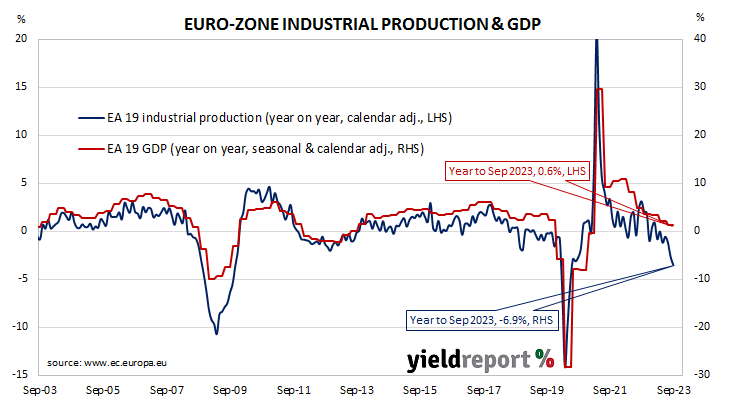Summary: Euro-zone industrial production down 1.1% in September, less than expected; down 6.9% on annual basis; German, French 10-year yields rise; output contracts in two of four largest euro economies.
Following a recession in 2009/2010 and the debt-crisis which flowed from it, euro-zone industrial production recovered and then reached a peak four years later in 2016. Growth rates then fluctuated for two years before beginning a steady and persistent slowdown from the start of 2018. That decline was transformed into a plunge in March and April of 2020 which then took over a year to claw back. Production levels in recent quarters have generally stagnated in trend terms.
According to the latest figures released by Eurostat, euro-zone industrial production contracted by 1.1% in September on a seasonally-adjusted and calendar-adjusted basis. The fall was slightly greater than the 1.0% contraction which had been generally expected and it contrasted with August’s 0.6% expansion. The calendar-adjusted contraction rate on an annual basis accelerated, from August’s rate of 5.1% to 6.9%.
German and French sovereign bond yields rose on the day despite the figures. By the close of business, the German 10-year bond yield had added 4bps to 2.64% while the French 10-year bond yield finished 5bps higher at 3.36%.
Industrial production contracted in two of the euro-zone’s four largest economies. Germany’s production fell by 1.6% over the month while the comparable figures for France, Spain and Italy were -0.5%, +1.0% and 0.0% respectively.


